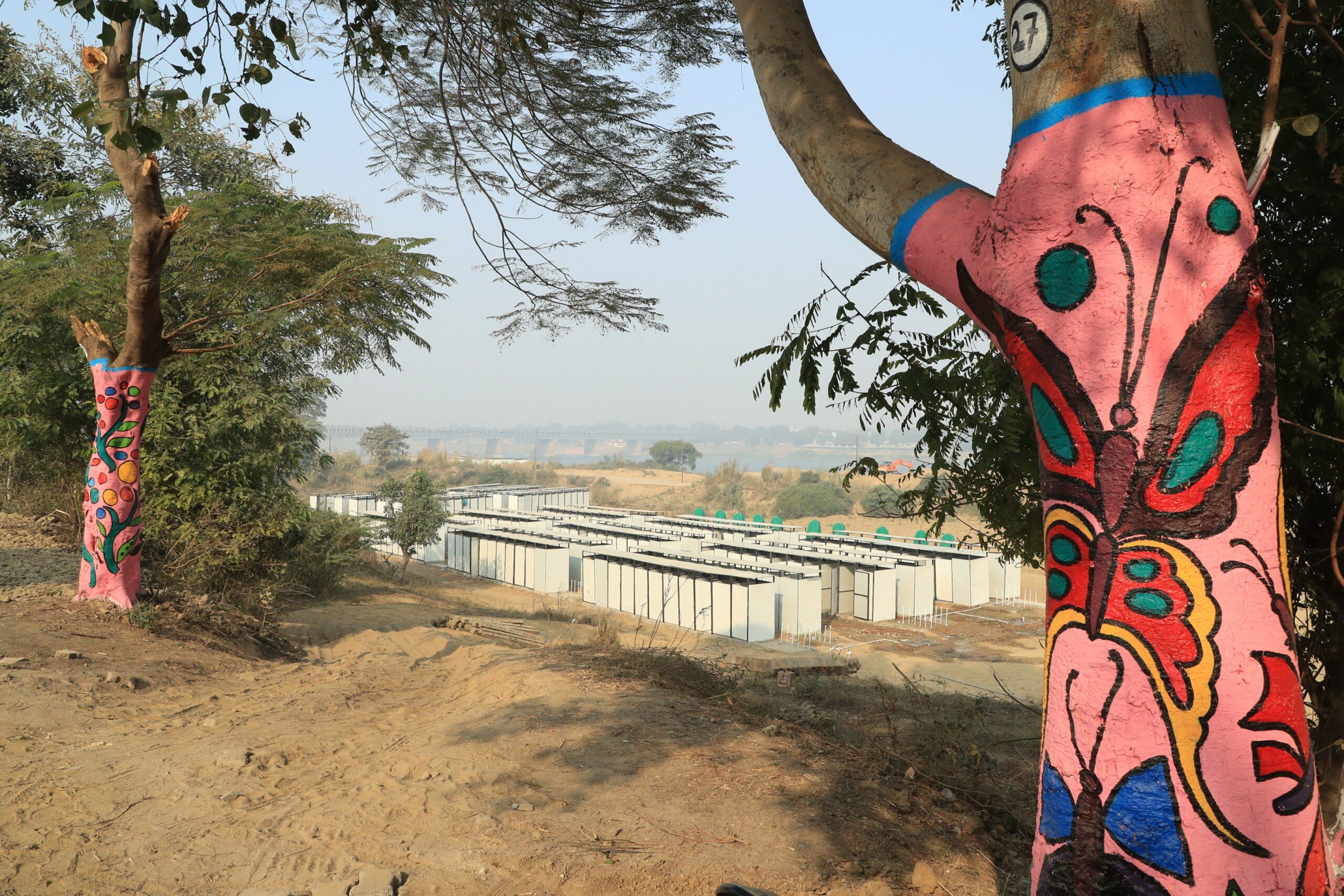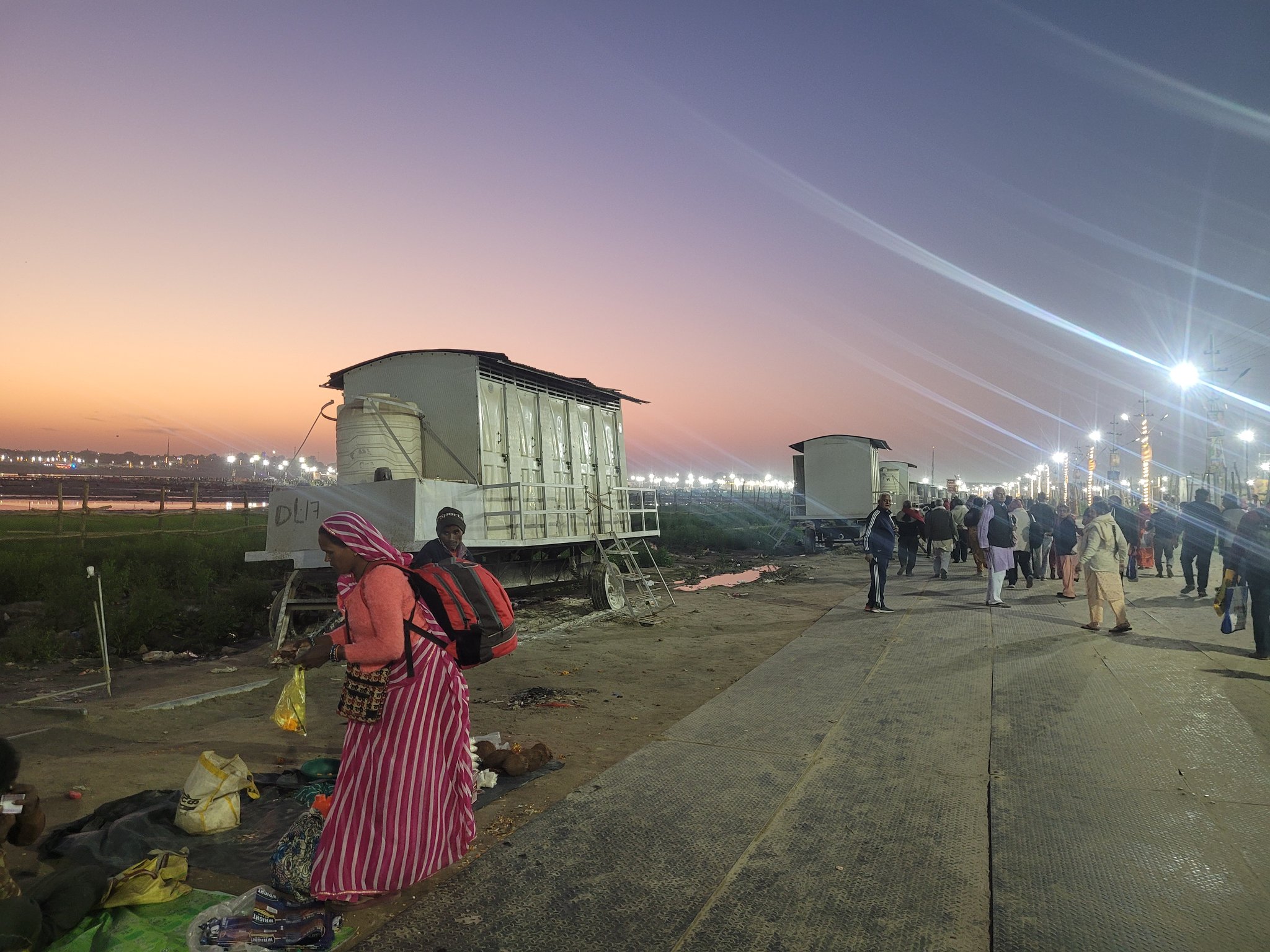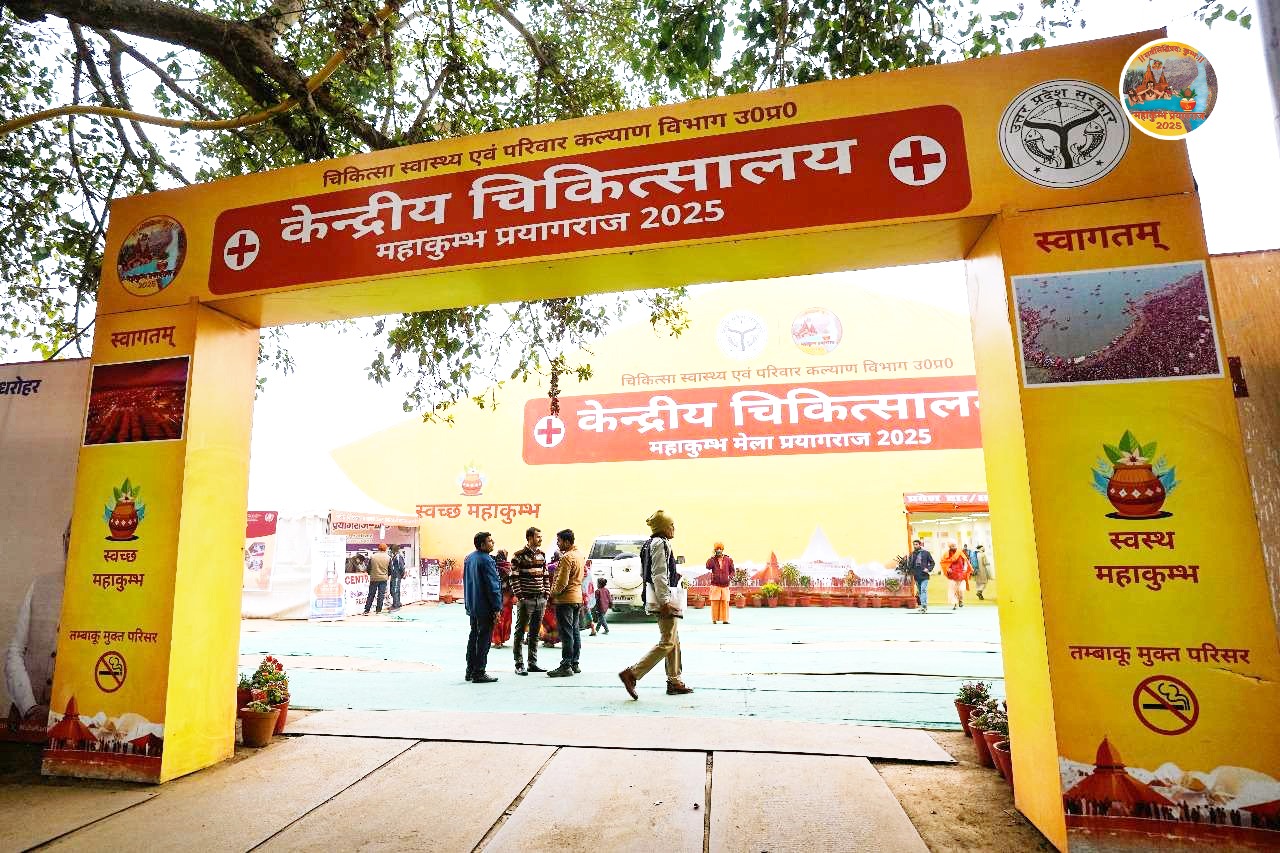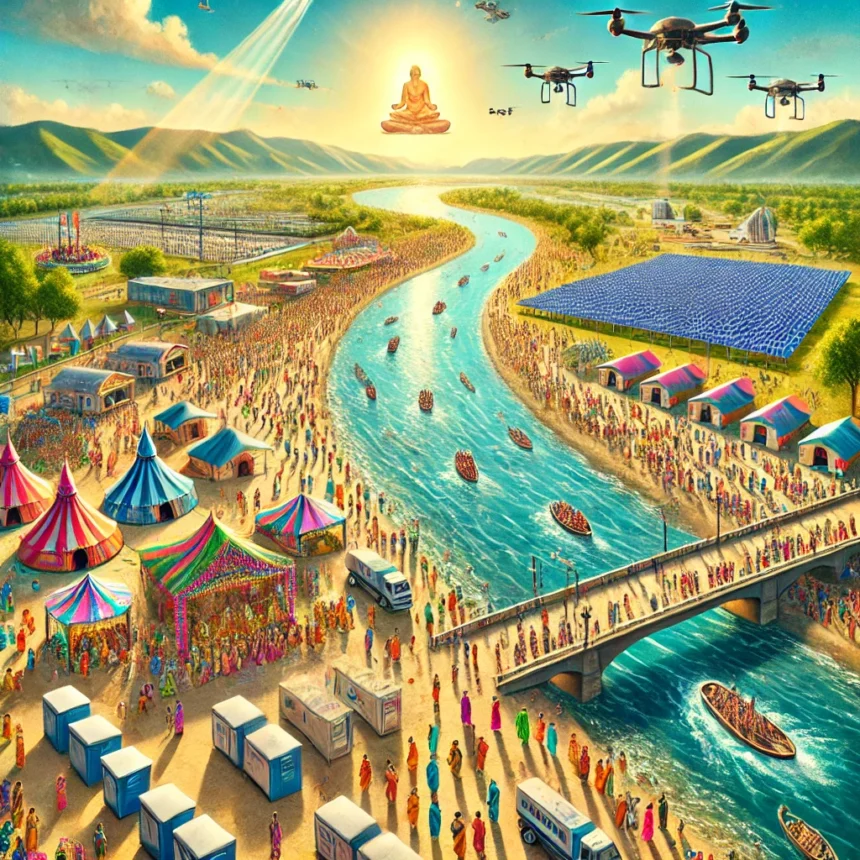Mahakumbha Mela 2025: Infrastructure Deep Dive
Analyzing Infrastructure at Mahakumbha Mela 2025
The Mahakumbha Mela 2025, held at the sacred confluence of the Ganges, Yamuna, and the mythical Saraswati in Prayagraj, was not just a spiritual gathering but also a monumental test of logistical and infrastructural prowess. With an attendance that swelled to over 500 million pilgrims, the event pushed the limits of existing infrastructure, revealing both its strengths and its vulnerabilities. This blog series aims to delve deeply into how the specific infrastructure components like sanitation, medical facilities, and water supply managed under this colossal strain, offering insights into the practicalities of hosting one of the world’s largest human gatherings.
As we turn from the vast canvas of history and spirituality that colors the Mahakumbha Mela, we delve into the equally crucial world of logistical orchestration, beginning with the innovations in sanitation that not only upheld public health but also revered the sacred grounds on which millions congregated.
Background
The Mahakumbha Mela has a rich history dating back thousands of years, rooted in Hindu tradition. It occurs every 12 years at four sacred river-bank locations in India: Prayagraj, Haridwar, Nashik, and Ujjain. Each location hosts the event on a rotational basis, with Prayagraj being one of the most significant due to the confluence of the Ganges, Yamuna, and the mythical Saraswati. Historically, the Mela has been a site for spiritual purification, where pilgrims bathe in the rivers to cleanse sins and seek blessings. Over centuries, it has evolved from a purely religious event to include cultural, social, and economic dimensions, attracting not only devotees but also tourists, scholars, and traders. The scale of the Mahakumbha Mela has grown exponentially, with modern logistics and infrastructure becoming increasingly critical to manage the influx of millions seeking spiritual enlightenment.
So far, the coverage of Mahakumbha Mela 2025 has focused on the logistical and infrastructural challenges faced during the event. We’ve explored the innovative solutions implemented to manage sanitation through mobile toilet units, the sustainable approach to water supply with solar-powered stations, and the advanced medical response systems including drone deliveries. Each component has been analyzed for its effectiveness, innovations, and areas where improvements are still needed, providing a comprehensive look at how such a massive gathering was supported by infrastructure.
Sanitation

At Mahakumbha Mela 2025, maintaining public health amidst the massive crowd was paramount, with sanitation infrastructure playing a crucial role. A significant innovation was the deployment of Mobile Toilet Units of Mahakumbha Mela 2025, which addressed the sanitation needs efficiently.
Mobile Toilet Units at Mahakumbha Mela 2025:
Design and Functionality: These units were equipped with bio-digesters for waste treatment, reducing environmental impact. They featured solar-powered ventilation systems to manage odor, enhancing user experience.
Deployment: Strategically placed across the Mela grounds, these units ensured accessibility for all attendees, particularly in high-density areas to prevent long queues and maintain cleanliness.
Public Reception: Feedback was mixed; while many appreciated the cleanliness and convenience, some highlighted maintenance issues during peak times.
Challenges and Innovations: The challenge was scaling up to meet demand during peak times. These mobile units represented a crucial innovation, yet there were calls for further improvements in future events.
If you’re interested in specific user experiences or more detailed public reactions, I can perform a web search to gather more recent information or suggest looking into news articles or official reports from the event. Would you like me to do that?
With the sanctity of cleanliness well managed through innovative sanitation solutions, the focus on purity extends beyond the physical to the very essence of sustenance—water. The next segment explores how the 2025 Mela ensured that the life-giving waters were as pristine and accessible as the spiritual blessings sought by the pilgrims.
Water Supply

Water management was another critical aspect, with Solar-Powered Water Stations playing a pivotal role in keeping pilgrims hydrated.
Functionality: Utilizing solar energy for water purification and distribution, these stations ensured a continuous supply, even in remote areas where traditional power was impractical.
Efficiency: Each station could serve thousands of liters of clean water daily, crucial during the hot days of the Mela. Solar panels provided an eco-friendly solution, significantly reducing operational costs.
Challenges: Despite these efforts, managing water waste and ensuring sustainable usage remained challenging, indicating a need for advanced water recycling systems or stronger public awareness campaigns on conservation.
As the waters flowed clean and clear, ensuring the well-being of the body, the Mahakumbha Mela also prepared for the well-being of the spirit and mind through comprehensive medical facilities. Here’s how advanced medical infrastructure played a pivotal role in safeguarding the pilgrims’ health amidst their spiritual journey.
Medical Camps

The emergency medical camps at Mahakumbha Mela 2025 were a testament to the preparedness and resilience of the health infrastructure.
Setup: Equipped with state-of-the-art facilities, these camps could handle a range from minor ailments to critical emergencies.
Innovations: A notable innovation was the use of drone-assisted medical deliveries for rapid response in hard-to-reach areas, carrying essential medicines, blood supplies, and equipment.
Efficiency: Response times were significantly reduced, averaging 15 minutes from call to care, a remarkable achievement given the event’s scale.
Challenges: The sheer volume of attendees had the potential to overwhelm the system, suggesting the need for expansion or a tiered system for different medical needs.
With the body cared for through meticulous planning and medical readiness, the spirit of the devotees remained undeterred and patient. This resilience and serenity, observed among the millions of attendees, underscore the profound spiritual engagement that transcends the physical confines of the event.
The Patience of Hindu Devotees
Despite the massive scale of Mahakumbha Mela 2025, which stretched logistical capabilities to their limits, the patience of Hindu devotees stood out remarkably. With nearly 400 million visitors already having attended the event, the atmosphere remained remarkably peaceful. The sheer number of attendees could have easily led to chaos, but the spiritual commitment of the pilgrims fostered an environment of calm and tolerance. This patience is deeply rooted in the Hindu ethos of acceptance and devotion, where the act of pilgrimage itself is seen as a form of spiritual discipline. Even with long waits for facilities like sanitation or water, or during medical emergencies, there were no significant untoward incidents. This collective patience underscores the profound respect for the sanctity of the event, demonstrating that the spiritual journey of these millions is as much about inner peace and endurance as it is about external rituals.
Comparative Analysis: Infrastructure at Mahakumbha Mela 2025 vs. 2013
Sanitation and Public Health:
The 2013 Mahakumbha Mela faced significant challenges in sanitation and public health. There was a lack of effective waste management systems, leading to environmental and health issues such as widespread defecation in open areas and the spread of waterborne diseases. The infrastructure struggled with the management of solid waste, which contributed to pollution and public health risks
In contrast, Mahakumbha Mela 2025 saw substantial improvements in sanitation with the introduction of Mobile Toilet Units equipped with bio-digesters and solar-powered ventilation systems. These innovations not only enhanced the sanitation facilities but also addressed environmental concerns by treating waste more effectively and reducing odor, showcasing a significant leap in managing public health and environmental impacts more sustainably.
Water Supply and Quality:
During the 2013 event, there were critical issues with water supply and quality. The availability of clean water was insufficient, especially on peak days, affecting millions of attendees. Additionally, the water bodies near the event site were polluted by industrial waste and ritual activities, which compromised the water quality and exacerbated public health problems.
The 2025 event featured Solar-Powered Water Stations that utilized advanced technology to ensure a continuous supply of purified water. This approach not only addressed the scarcity and quality issues faced in 2013 but also integrated eco-friendly solutions by using solar energy, marking a significant improvement in water resource management at the event.
Infrastructure and Coordination:
The 2013 Mela highlighted several deficiencies in planning, infrastructure arrangements, and coordination among various government departments and agencies. The lack of a unified monitoring and real-time response mechanism led to logistical challenges during the event.
In 2025, there was a noticeable enhancement in logistical planning and infrastructure management. The use of drone-assisted medical deliveries and better-planned medical camps demonstrated a more coordinated approach to handling large crowds and providing emergency services efficiently. These changes indicate a move towards more integrated and technology-driven management practices that were less evident in the 2013 preparations.
Overall, the Mahakumbha Mela 2025 showcased a significant evolution in the management of large-scale religious gatherings, with marked improvements in sanitation, water supply, and overall infrastructure coordination compared to the 2013 Mela. These advancements not only improved the attendee experience but also ensured a higher standard of health, safety, and sustainability.
To The Organizers
To the organizers of Mahakumbha Mela 2025, your efforts have woven a tapestry of divine service and logistical mastery that will be remembered for ages. Your innovative spirit, seen in the deployment of mobile sanitation units, the pioneering use of drone-assisted medical deliveries, and the eco-conscious solar-powered water stations, has set a new benchmark for large-scale events. Your dedication to creating a harmonious blend of tradition and modernity has not only facilitated the spiritual journey of millions but has also touched their hearts with your profound care and foresight. Your ability to manage such an immense gathering with grace, ensuring the safety and comfort of every pilgrim, is nothing short of miraculous. As we reflect on the lessons learned, we are filled with admiration for your resilience and vision. May your legacy inspire future gatherings, making each one a more seamless, sustainable, and spiritually enriching experience. Thank you for your unparalleled service and for ensuring that this divine pilgrimage was both a logistical triumph and a spiritual haven.
Reflections on Infrastructure at Mahakumbha Mela 2025
The infrastructure at Mahakumbha Mela 2025 showcased both innovation and the limits of current capabilities. The mobile sanitation units, drone-assisted medical deliveries, and solar-powered water stations stood out as exemplary solutions to the challenges posed by such a massive gathering. However, the event also highlighted areas ripe for improvement, particularly in scaling up facilities to meet peak demand, enhancing waste management, and reducing environmental footprints. As we look towards future gatherings, these insights offer valuable lessons in infrastructure planning, emphasizing the need for flexibility, sustainability, and scalability. By learning from Mahakumbha Mela 2025, we can better prepare for the spiritual and logistical needs of millions, ensuring their journey remains both divine and safe. While the blog does not cover the elements related Mahakumbha Mela 2025 some of them have already been covered earlier. The remaining ones will be covered in the subsequent blogs.
Feature Image: Click here to view the image.
Visit our Youtube Channel by clicking here.
Click here to visit the related page on Medium.com
Follow us on our social median handles
Glossary of Terms:
- Mahakumbha Mela: A major Hindu festival held every 12 years at one of four sacred river-bank sites in India—Prayagraj, Haridwar, Nashik, and Ujjain—where millions of devotees gather to bathe in holy rivers, seeking spiritual purification.
- Prayagraj: A city in the Indian state of Uttar Pradesh, known as a pilgrimage center, hosting the confluence of three rivers: the Ganges, the Yamuna, and the mythical Saraswati.
- Ganges, Yamuna, and Saraswati: Sacred rivers in Hinduism. The Ganges and Yamuna are real rivers, while Saraswati is mythical and believed to flow underground, joining the other two at Prayagraj.
- Solar-Powered Water Stations: Facilities using solar energy to purify and dispense water, ensuring a sustainable and continuous supply, especially relevant in areas without stable conventional power sources.
- Bio-digesters: Technologies that treat waste biologically to decompose organic material, reducing environmental impact and enhancing sanitation efficiency.
- Drone-assisted medical deliveries: Use of drones to deliver medical supplies such as essential medicines, blood supplies, and small equipment, particularly useful in reaching remote or crowded areas quickly.
- Mobile Toilet Units: Portable sanitation facilities equipped with features like bio-digesters and solar-powered ventilation, designed to manage large crowds in temporary event settings.
- Logistical prowess: The ability to plan and coordinate complex operations, often involving the management of large amounts of people, facilities, and supplies.
- Spiritual purification: In Hindu culture, the process of cleansing sins and impurities through sacred rituals, often involving bathing in holy rivers during auspicious times.
- Cultural, social, and economic dimensions: Refers to the various aspects of an event that go beyond the religious or spiritual, including the impact on local economies, social practices, and cultural expressions.
Top Hashtags: #MahakumbhaMela2025 #SpiritualJourney #InfrastructureInnovation #SacredGathering #HinduFestivals



Leave a Reply